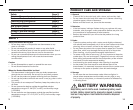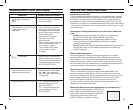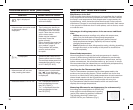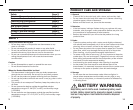
2. Inserting the probe into the ear canal
For children aged 1 year or above and for adults:
• Pull the ear slightly backwards and insert the probe along the ear
canal in a straight direction.
• Insert the probe until the body of the probe fully seals the ear canal
and hold it there until measurement is completed.
For an infant less than 1 year old:
• Pull the ear diagonally behind to make the ear canal straight.
• Apply the tip of the probe straight against the ear canal. Hold in
this position until measurement is completed.
For measuring your own temperature:
• Hold the main body of the thermometer and insert the probe along
your own ear canal. Push the probe naturally against the ear canal
and insert it further.
After confirming that the probe and the ear canal are in close
contact, start the measurement.
USE OF YOUR PRODUCT (continued)
Less than 1 Year
1 Year and older
Fully Insert Thermometer Probe
Gently into Ear
Gently Pull Outer Ear.
Straighten Ear Canal
8
PREPARATION BEFORE USE
1. General
• Ensure that your ear is clean. If your ear is clogged with excessive
earwax measurement may be inaccurate.
• Sudden change of ambient temperature may influence the
measurement accuracy. For accurate measurement, try to store
the ear thermometer in the same room where you usually take
your temperature.
• For accurate measurement, take the temperature while you relax.
Your temperature may increase after exercise or a bath.
• The right ear reading may differ from the left ear. Therefore, always
take the temperature using the same ear.
• External factors may influence ear temperatures, including when an
individual has:
-been lying on one ear or the other
-had their ear covered
-been exposed to very hot or very cold temperatures
-has just finished swimming or bathing
-has been wearing hearing aids or ear plugs
Should any of the above mentioned situations occurs, wait for
20 minutes prior to taking the temperature.
2. Inserting batteries
• Your Ear Thermometer requires two AAA batteries. To insert,
remove the battery cover by sliding it away from the probe as
shown in fig.3.
5














